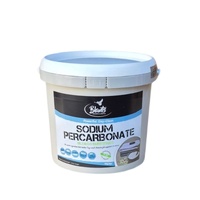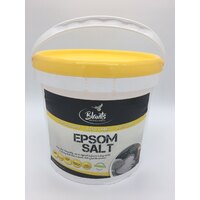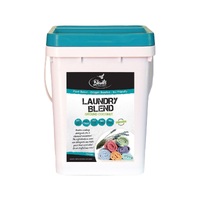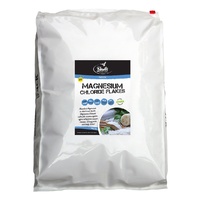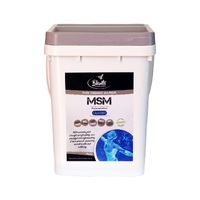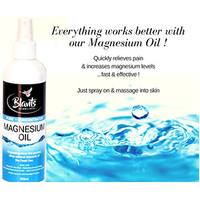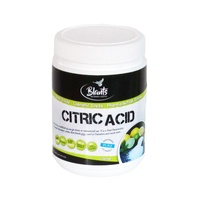Product Description
The human body is composed of atoms within molecules, and molecules within cells, all held together by chemical bonds. Electrons bond atoms together. Atoms have both a positive, and a negative charge, and remain stable when the bond is intact.
However due to toxins, pollutants, poor diet and aging, molecular bonds do break apart releasing roaming positively charged ions (protons that are now free radicals) that instinctively seek out negative charged ions (electrons) for stability. They draw electrons from neighbouring atoms which destabilises those atoms. Those destabilised atoms are now free radicals themselves, causing a cascade effect until the actual cell is destabilised, and then another, and another which can be the catalyst of chronic disease within the body, even cancer.
So can we somehow intervene, and halt the cascade of free radicals?
Enter Bentonite Clay! Bentonite is negatively charged, and so provides the electrons the free radicals seek for stability. Free radicals no longer roam free causing molecular and cellular damage. Now bound, free radicals can be escorted from the body.
It also works in another way. It swells like a highly porous sponge when mixed with water. Toxins are drawn into the sponge through electrical attraction, and once there, they are bound.
Bentonite Clay is known to have an abundance of minerals, including calcium, magnesium, silica, sodium, copper, iron and potassium. Researchers report that several traditional cultures living in regions of the Andes, Central Africa, and here in Australia have consumed clays as a traditional healing method for protecting the body from disease for centuries. Many animals will instinctively turn to eating dirt and clay to help remove poisons from their systems, or during times of illness or distress.
Bentonite Clay (also known as Montmorillonite clay) Benefits & Uses
The largest known source of Bentonite Clay is in Fort Benton, Wyoming, thus the name Bentonite Clay. It is also known as Montmorillonite clay, from the region of France called Montmorillon, where the clay was first discovered. Whether called Bentonite or Montmorillonite it is one in the same.
Tips:
- Bentonite should not be stored in metal containers as this could reduce its potency.
- For easier blending sprinkle Bentonite Clay into the water gradually, mixing as you go. It will hydrate more evenly. Best to not add the water to the clay.
- As with any detox protocol, it is essential to drink lots of water to help your body flush released toxins. You may otherwise place a burden on organs such as the kidneys. It is tempting to attempt to detox rapidly, but that may have an adverse effect. Your body will tell you when you are going too quick with signs of fatigue, nausea, joints aches. If you do experience these in a mild form, these are normal symptoms of detox, but if it is more than mild you may need to stop detox until symptoms subside, and then start again at a slower pace. It is a different experience per individual, and so one needs to heed the feedback the body is providing.
Bentonite Clay External Uses:
A Clay Detox Bath
When adding Bentonite Clay to a bath it is best to follow one of the below methods so it dissolves well, or it could otherwise possibly clump.
- One suggestion is to run the bath water, and gradually sprinkle the clay over and across the warm water, and
mix as you go.
- Or pre-mix in a bowl or bucket by first filling with some warm water, and then gradually add the clay, blending
as you go until it is a thick liquid, and then gradually add that to the bath mixing it in as you pour.
- Another is to mix in a bowl or bucket as above, until it is a paste, and spread that paste over your body prior to immersing into the bath. As you soak, the clay will slowly get softer, and dissolve off your body into the tub.
After the bath take a shower to remove residual clay from your body. If your skin is dry after a clay detox, apply moisturiser.
When draining the bath tub you may find blobs or chunks of clay that did not disperse well. You may want to screen these larger particles from your drain.
How much Bentonite Clay to use for Bath or Foot Soak ?
A suggested protocol is 1- 4 cups per bath, soaking for 20 minutes. It is suggested not to soak longer than 20 min per bath as it can be too much detox in one session. If you know you are toxic you may wish to soak daily, or every other day until you feel you have improved. Don’t drink or reuse the clay water you have soaked in as it has drawn toxins from your body, and therefore needs to be flushed down the drain.
Foot soaks are great too, if you don’t have a bathtub, in which case use ½ cup of Bentonite Clay blended into warm water.
Bentonite Clay Relief for Skin Conditions
Blend 1 part Bentonite to 2 parts water, and apply to the skin as a clay pack. Bacteria and toxins living on the surface of the skin & within pores are drawn out, and bound to the clay. Keep the pack on for about 20 minutes before removing with warm water. For facials, apply a clay mask once or twice per week for best results. This helps to prevent ,and reduce skin conditions such as pimples, blotches, and infections, and to relieve eczema, psoriasis or dermatitis.
For Pets
For pets that are sick, vomiting or showing signs of illness, you can add some Bentonite Clay into their water until it dissolves; they should not taste anything or even notice that it’s there. Alternatively give orally with a dropper.
(B505)
| SKU | B505 |
| Brand | Blant's |
| Shipping Weight | 1.0000kg |
Bentonite Clay
By: Kim on 7 December 2023My dog has Sards, which Vets here in Australia seem to know nothing about. Doing my own research I found a Vet who has written & researched Sards in America. One product he suggests is Bentonite Clay. After 3 days using it he has more energy & seems so much happier. Will be using this plus introducing other supplements he suggests for the rest of his life. Great product
(5)


![Organic Bentonite Clay [Size: 9kg]](/assets/thumbL/B505.jpg?20210506154516)
